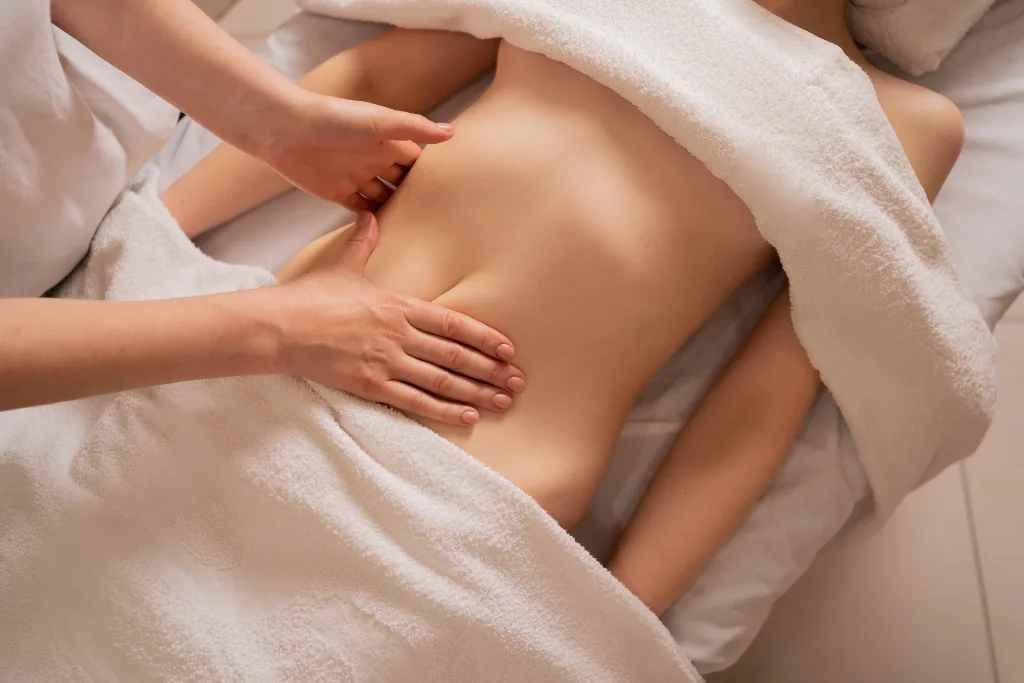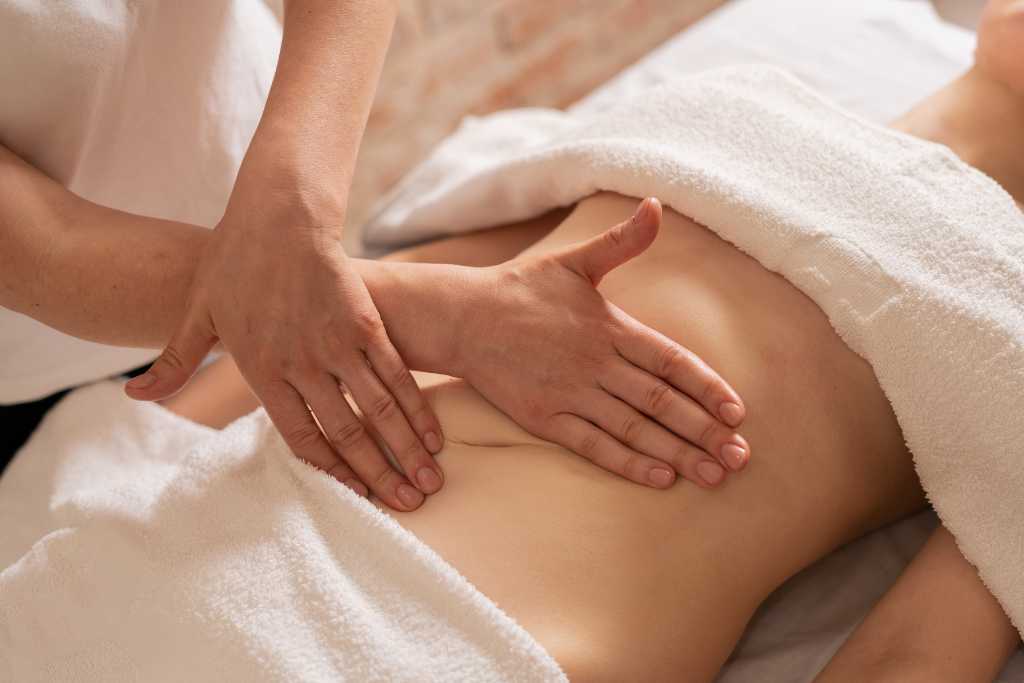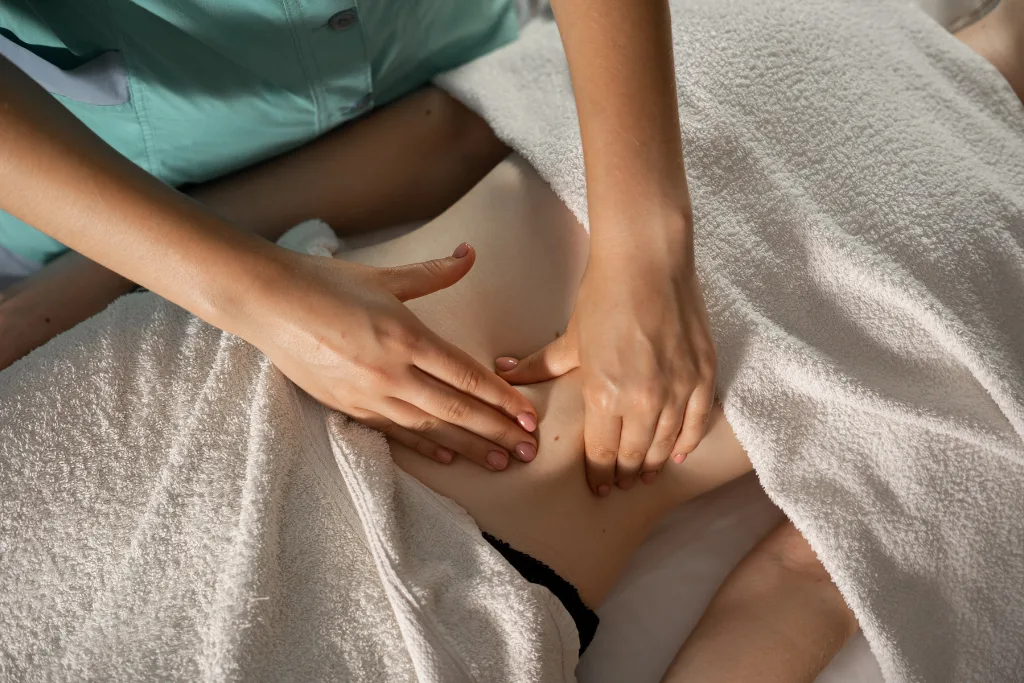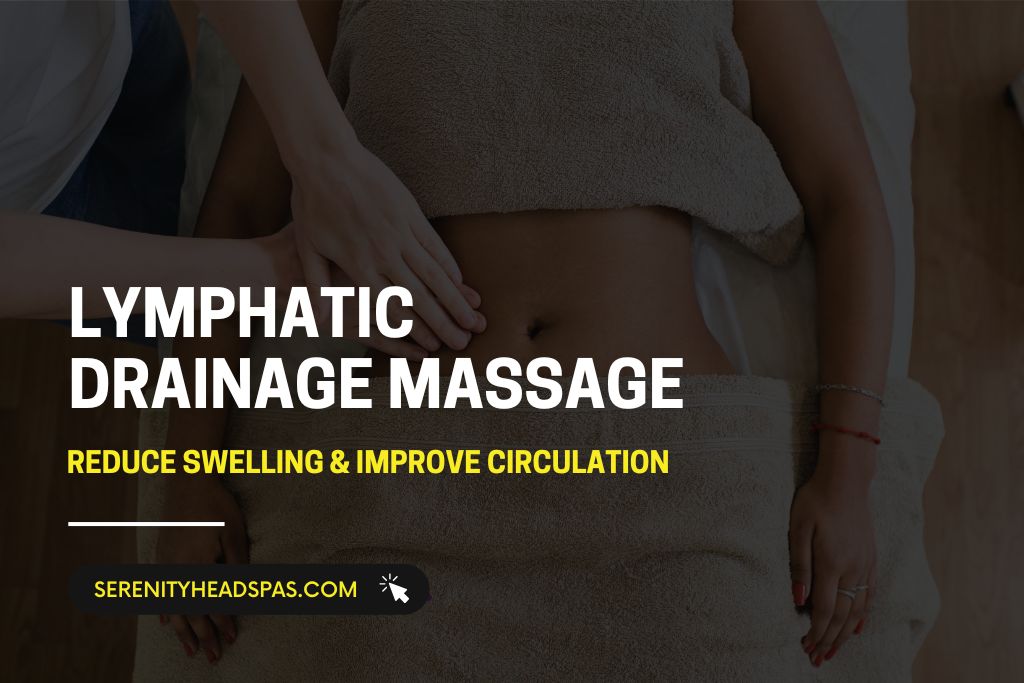The lymphatic system is a complex network that helps maintain fluid balance and remove waste from the body. When it functions efficiently, individuals often experience:
- Improved health
- Increased energy
However, if the lymphatic system becomes impaired, it can lead to:
- Swelling
- Fatigue
- Accumulation of waste products
Lymphatic drainage massage is a targeted therapy designed to address these issues. This gentle technique helps to:
- Reduce swelling
- Improve circulation
- Support the body’s natural detoxification process.
In this article, we’ll explore the science behind lymphatic drainage massage and highlight the key health benefits of this therapeutic practice.
What is Lymphatic Drainage Massage?
Lymphatic drainage massage is a specialized therapeutic technique designed to support the body’s natural detoxification processes. This gentle, rhythmic massage encourages the movement of lymph fluids, helping the body remove waste and toxins efficiently.
Definition and Overview
- Involves light, precise movements applied to the skin
- Uses gentle pressure, unlike deep tissue massage
- Stimulates lymphatic vessels located just beneath the surface
- Moves stagnant fluid out of tissues and back into the lymphatic system for proper filtration
Originally developed in the 1930s to address chronic sinus issues, lymphatic drainage massage has evolved into a widely recognized therapy for supporting overall health.
Key Features:
- Gentle, non-invasive technique
- Focuses on stimulating lymphatic vessels
- Uses light, rhythmic strokes
- Supports the body’s natural fluid movement
The primary goal is to improve lymphatic drainage and support the system’s function. By manually guiding lymph fluid toward the lymph nodes, the massage helps the body process toxins and waste more efficiently, leading to numerous health benefits.
The Role of the Lymphatic System
The lymphatic system is a vital part of your immune and circulatory systems. It is made up of a network of vessels, nodes, and organs that carry a clear fluid called lymph. This system plays a key role in:
- Maintaining fluid balance in body tissues
- Removing waste products and toxins
- Transporting fats from the digestive system
- Producing immune cells to fight infection
A healthy lymphatic system is fundamental to overall well-being. When it functions properly, waste is efficiently removed, toxins do not build up, and fluid balance is maintained, supporting your body’s health and vitality.

How Does Lymphatic Drainage Massage Reduce Swelling?
One of the most well-known benefits of lymphatic drainage massage is its ability to reduce swelling, also known as edema. This is achieved through targeted techniques that address fluid retention directly.
Swelling Reduction Techniques
Lymphatic drainage massage focuses on improving lymphatic flow, which is the root cause of many types of swelling. Gentle, precise movements encourage excess fluid trapped in tissues to enter the lymphatic vessels. This helps reduce fluid retention and relieve discomfort.
The massage is especially effective for:
- Lymphedema
- Post-surgical swelling
- Fluid buildup from injuries
How it works:
- Stimulates the movement of stagnant lymph fluid
- Redirects fluid away from swollen areas
- Encourages fluid to enter the lymphatic system
- Supports the body’s natural drainage process
By clearing these pathways, the massage allows the lymphatic system to manage fluid levels more efficiently, reducing puffiness and discomfort.
Benefits for Swelling and Inflammation
In addition to easing existing swelling, lymphatic drainage massage helps manage underlying inflammation. Improving the removal of metabolic waste and inflammatory substances from tissues calms the body’s inflammatory response.
Key benefits include:
- Alleviates puffiness in the face, legs, and ankles
- Reduces localized inflammation
- Soothes discomfort from fluid retention
- Promotes overall lymphatic health
Regular sessions can support long-term lymphatic function, helping prevent future fluid buildup and maintaining the body’s ability to manage inflammation naturally.
Can Lymphatic Drainage Massage Improve Circulation?
Beyond reducing swelling, lymphatic drainage massage also supports the body’s circulatory system. Often considered a form of circulation therapy, it helps improve overall wellness and supports natural body functions.
Enhancing Blood Circulation
While the primary focus is on the lymphatic system, gentle massage movements also improve blood flow. As lymph fluid moves more freely, pressure on nearby blood vessels decreases, allowing blood to circulate more efficiently.
Benefits for circulation include:
- Reduces pressure on surrounding blood vessels
- Improves the flow of oxygen-rich blood
- Supports nutrient delivery to tissues
- Aids in the removal of cellular waste
Better circulation has a positive ripple effect on the body, supporting tissue repair, organ function, and healthy cellular activity. This makes lymphatic drainage massage beneficial not only for swelling but also for overall vitality.
Benefits for Skin and Energy Levels
The enhancement of both lymphatic and blood circulation can lead to visible improvements in your skin and a boost in your energy. Improved circulation delivers more oxygen and nutrients to the skin, which can result in a healthier, more radiant complexion.
Simultaneously, the efficient removal of toxins and waste can leave you feeling less sluggish and more energized.
- Promotes a glowing, healthy skin tone.
- Reduces the appearance of puffiness.
- Helps increase overall energy levels.
- Combats feelings of fatigue and lethargy.
These benefits make lymphatic drainage massage a valuable therapy not just for specific health concerns but also for general wellness and vitality. It supports the body’s fundamental processes, helping you look and feel your best.

How Often Should I Get a Lymphatic Drainage Massage for Best Results?
The optimal frequency for lymphatic drainage massage varies based on individual circumstances and health goals. A consistent approach is key to achieving and maintaining the best results.
Frequency Recommendations
For general wellness and detoxification, a session once a month may be sufficient. However, for specific conditions like lymphedema, post-surgical recovery, or chronic inflammation, more frequent sessions may be recommended, such as once or twice a week initially.
It is important to consult with a qualified therapist to create a treatment plan tailored to your specific needs.
- General wellness: Monthly sessions.
- Post-surgery/injury: 1-2 times per week initially.
- Chronic conditions: Varies based on therapist recommendation.
- Detoxification: A series of sessions close together.
Your health status, lifestyle, and the specific goals you wish to achieve will all influence the ideal frequency. A professional can help you determine the right schedule to maximize benefits.
Long-Term Benefits
Regularly receiving lymphatic drainage massage can lead to significant long-term improvements in your health. Consistent sessions train the lymphatic pathways to drain more efficiently on their own. This helps to improve lymphatic drainage over time, making your system more resilient and effective at managing fluid balance and detoxification.
- Maintains an efficient lymphatic system.
- Enhances long-term circulation.
- Reduces the recurrence of swelling.
- Supports sustained immune function.
Investing in regular sessions can be a proactive measure for maintaining your health. It supports the body’s foundational systems, contributing to sustained wellness and preventing future issues related to poor circulation and lymphatic function.
Are There Any Side Effects of Lymphatic Drainage Massage?
Lymphatic drainage massage is a very safe and gentle therapy for most people. However, like any treatment, there are some potential side effects and contraindications to consider.
Potential Risks and Precautions
Most side effects are mild and temporary. Some individuals may experience fatigue, lightheadedness, or an increase in urination immediately following a session as the body processes the mobilized fluid and toxins.
It is important to note that this therapy is not suitable for everyone. Individuals with certain medical conditions.
Those with conditions such as congestive heart failure, active infections, blood clots, or kidney problems should avoid this massage.
- Possible fatigue or tiredness post-session.
- Temporary lightheadedness.
- Increased need to urinate.
- Not recommended for certain heart or kidney conditions.
Always inform your therapist of your complete medical history to ensure the treatment is safe for you. This allows them to tailor the session appropriately or recommend against it if necessary.
Tips for a Safe Experience
To ensure a safe and effective experience, it is crucial to seek a qualified and certified therapist who specializes in lymphatic drainage massage.
Ask about their training and credentials before booking a session. Proper preparation, such as hydrating well before and after the massage, can also enhance the benefits and minimize potential side effects.
- Choose a certified and experienced therapist.
- Discuss your health history beforehand.
- Drink plenty of water before and after your session.
- Rest and avoid strenuous activity afterward.
Following these simple tips can help you get the most out of your lymphatic drainage massage while ensuring your safety and comfort throughout the process..

Book your session at Serenity Head Spa and feel the benefits of lymphatic drainage massage!
Lymphatic drainage massage is a natural way to reduce swelling and boost circulation. By supporting one of the body’s most essential systems, this gentle therapy can improve energy, reduce inflammation, and promote healthier, glowing skin.
Whether you’re addressing specific health concerns or simply enhancing overall wellness, lymphatic drainage massage is a valuable addition to your self-care routine.
Book your session at Serenity Head Spa in Rockville, MD & Springfield, VA and experience the benefits firsthand!
Frequently Asked Questions
Is lymphatic drainage massage suitable for everyone?
While it is safe for most people, lymphatic drainage massage is not recommended for individuals with certain medical conditions, including congestive heart failure, a history of blood clots, active infections, or kidney failure. It is essential to consult with a healthcare provider or a certified therapist to determine if it is appropriate for you.
How long does a lymphatic drainage massage session typically last?
A typical session lasts between 30 and 90 minutes. The duration depends on the area being treated and the individual’s specific needs. A full-body session will naturally take longer than a session focused on a specific area like the face or limbs.
What should I do before and after a lymphatic drainage massage?
Before your session, it is important to be well-hydrated. Avoid heavy meals right before your appointment. After the massage, continue to drink plenty of water to help flush out the toxins that have been moved. It is also beneficial to rest and avoid strenuous activities for the remainder of the day.
Can lymphatic drainage massage help with weight loss?
Lymphatic drainage massage is not a weight loss treatment. However, by reducing fluid retention and bloating, it can result in a temporary reduction in size and a slimmer appearance. It supports the body’s detoxification processes, which can be a beneficial component of a comprehensive wellness and weight management plan.
What are the signs that I need a lymphatic drainage massage?
Signs that you might benefit from a lymphatic drainage massage include persistent swelling or puffiness (edema), frequent feelings of fatigue or sluggishness, brain fog, recurrent sinus infections, skin issues like acne or dullness, and slow recovery from illness or injury. If you experience these symptoms, this therapy might be beneficial.

